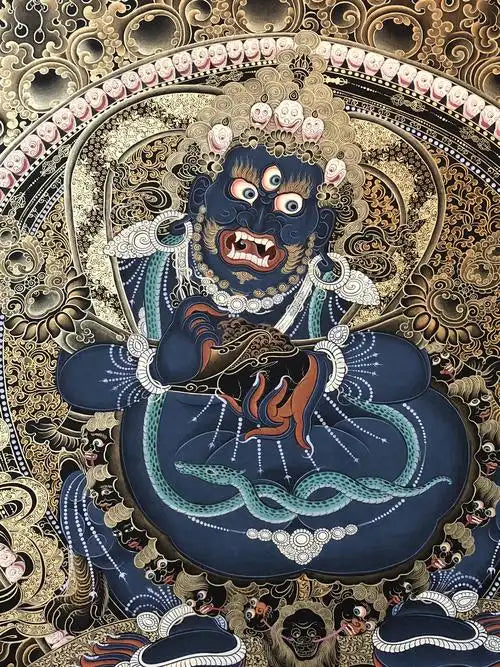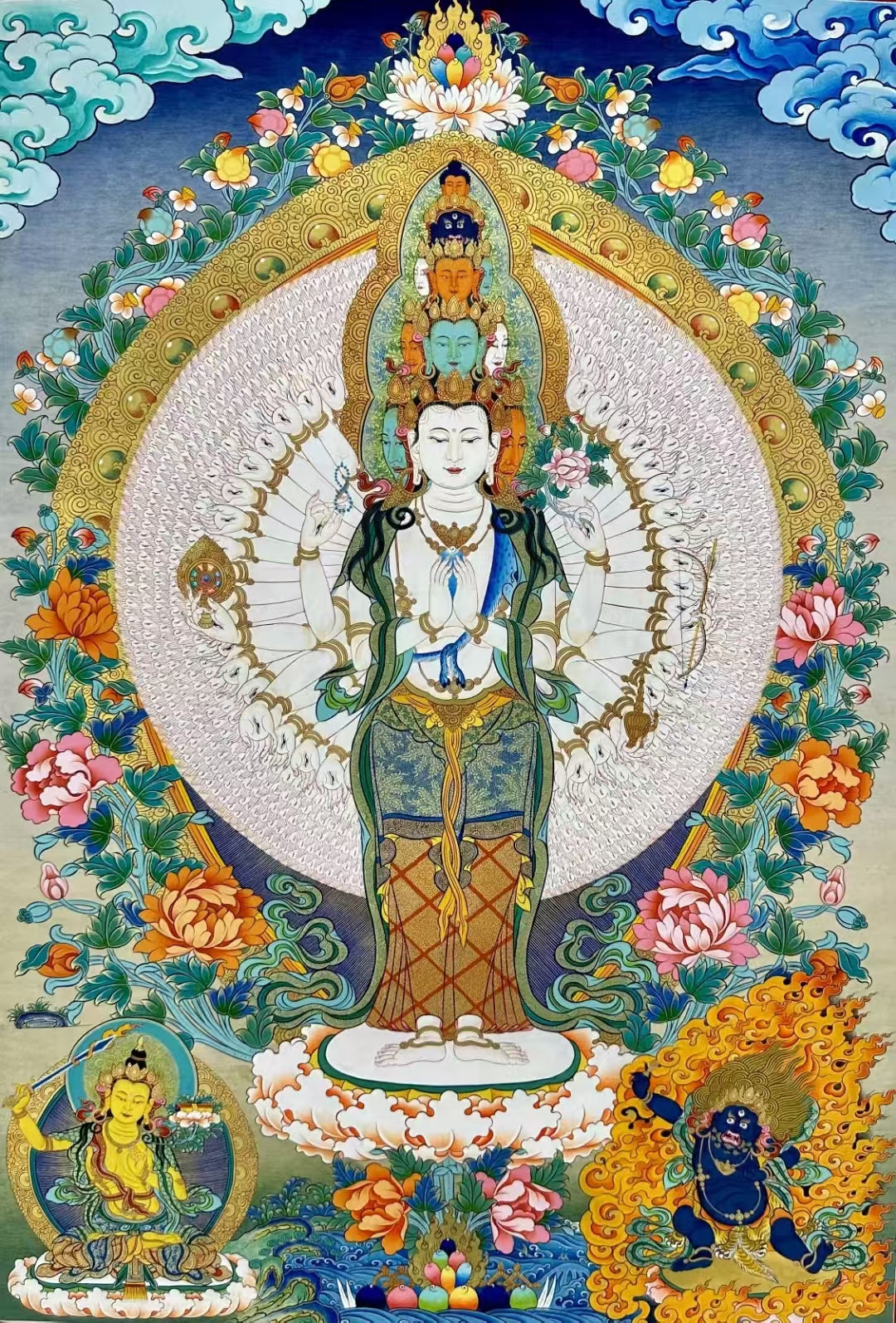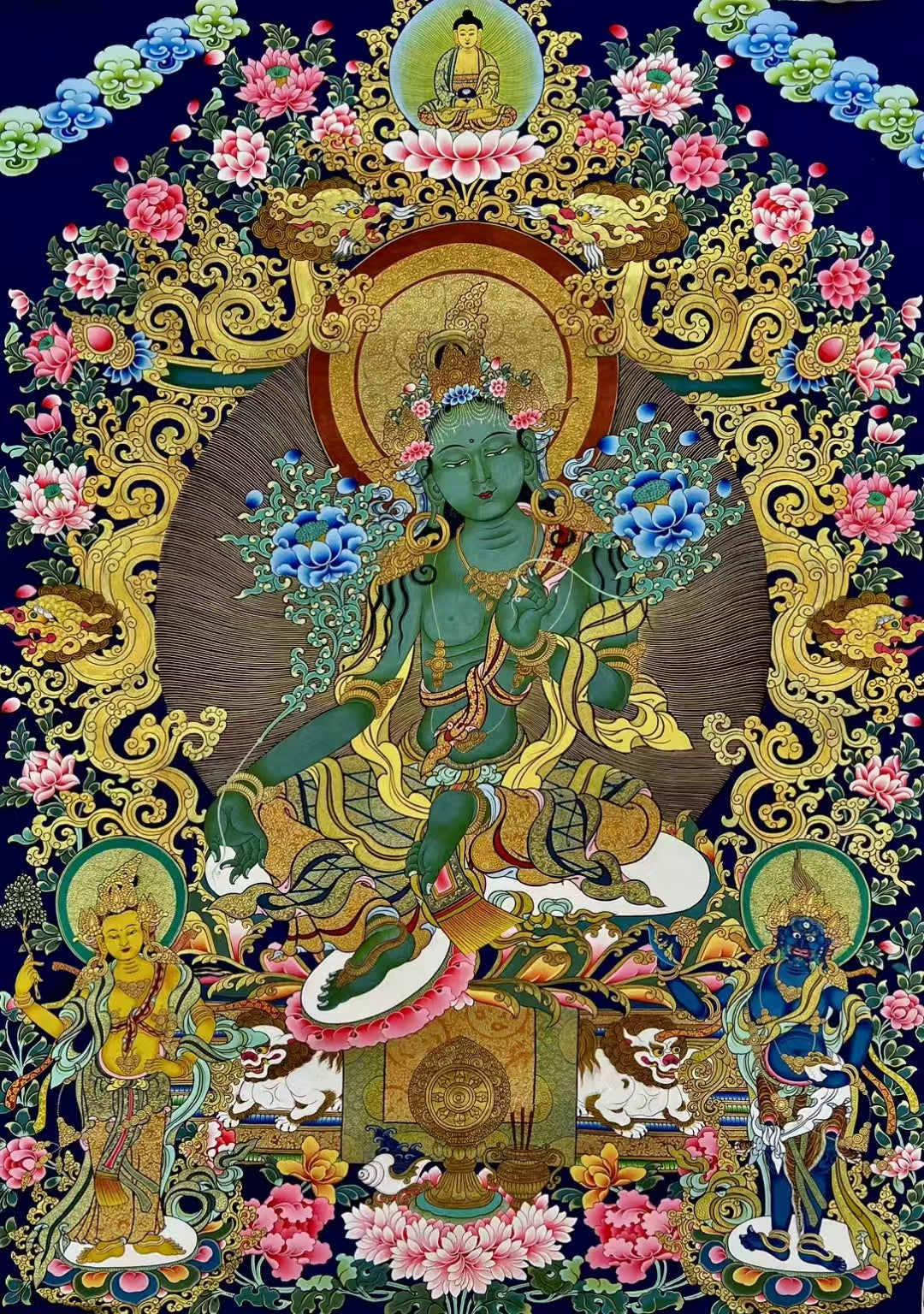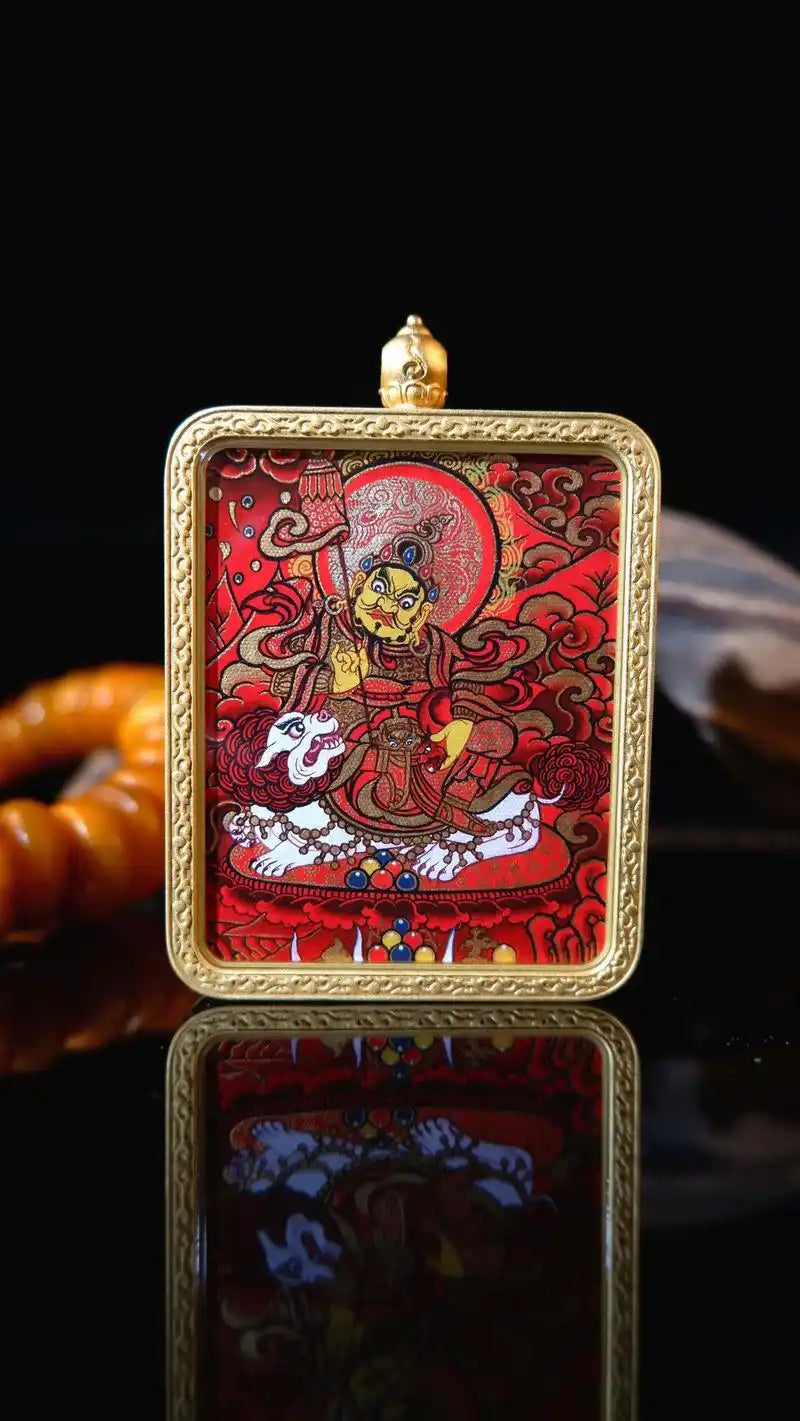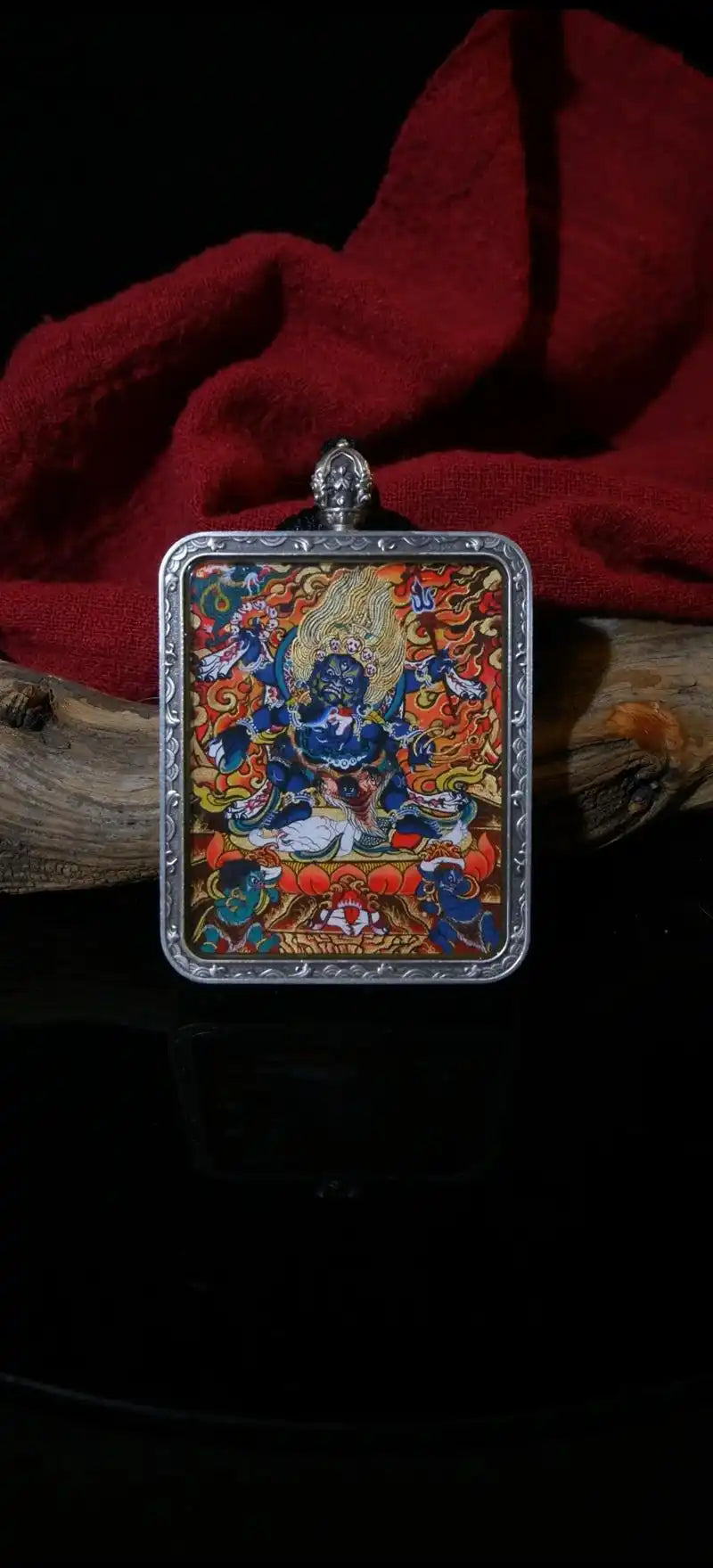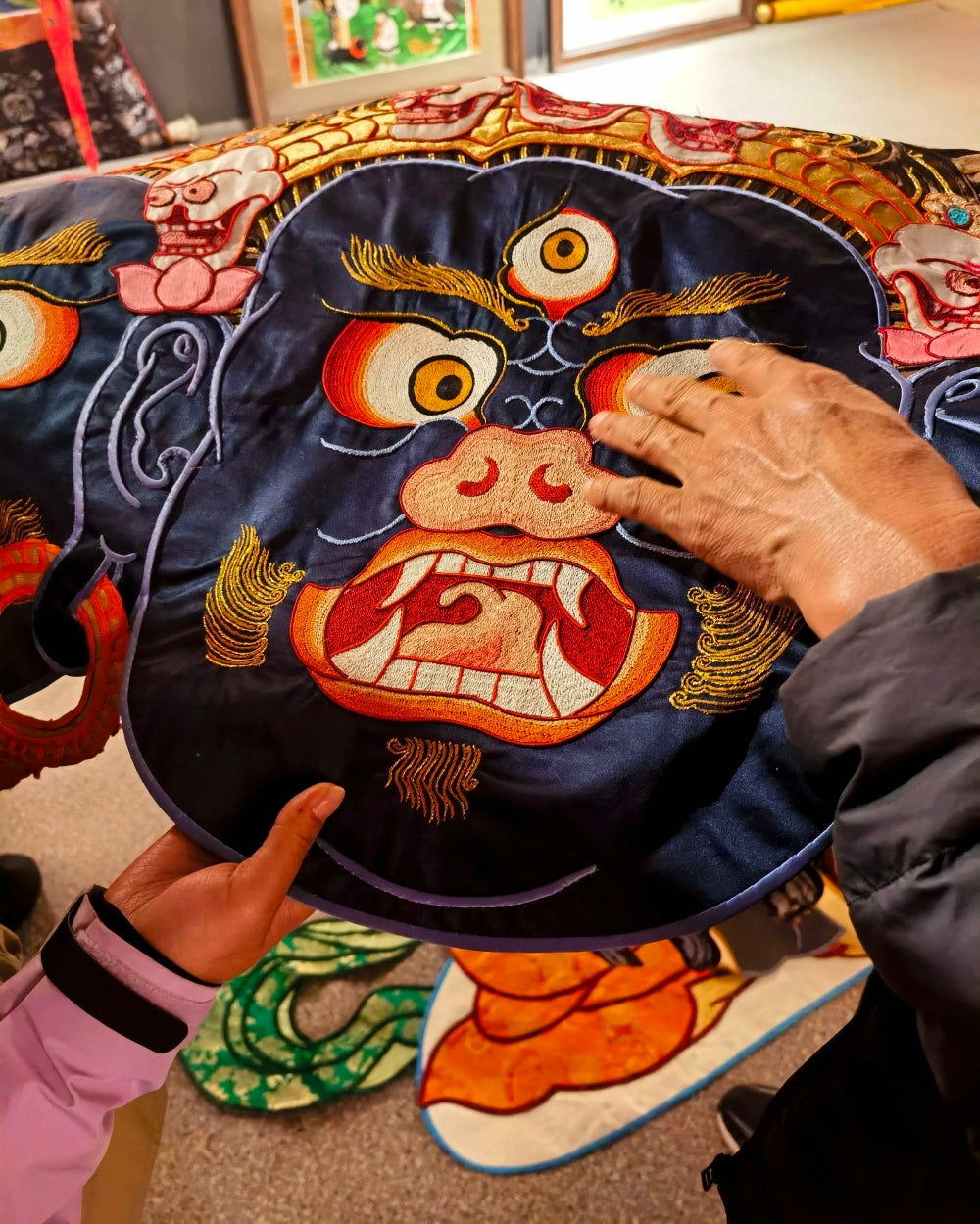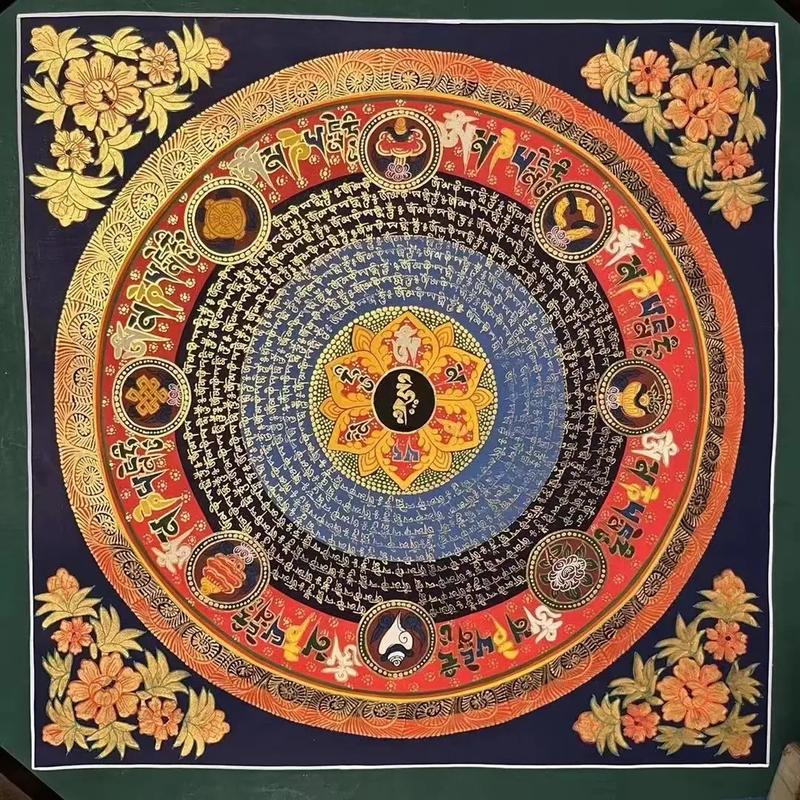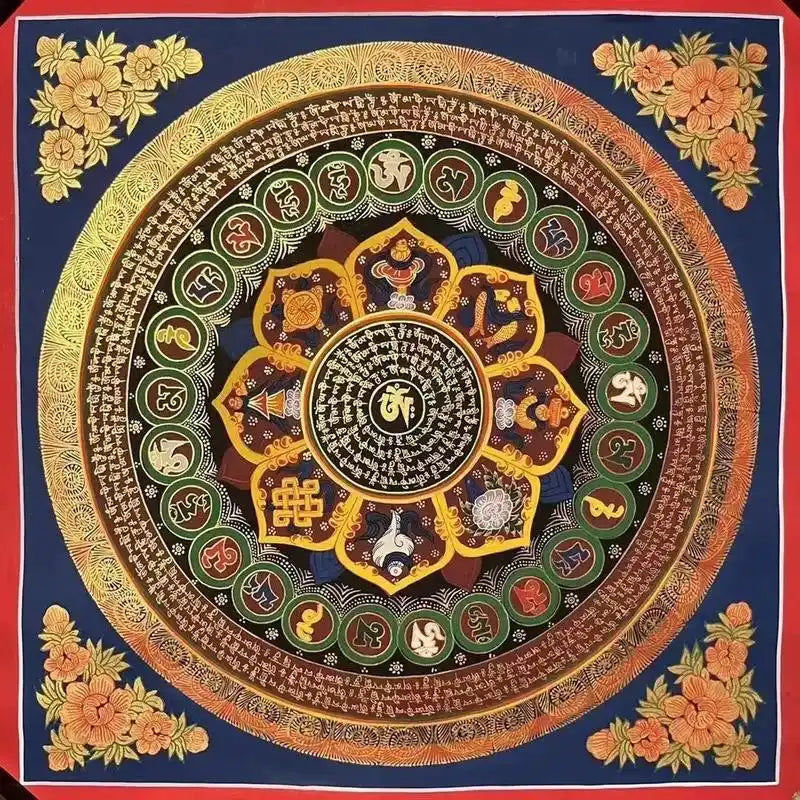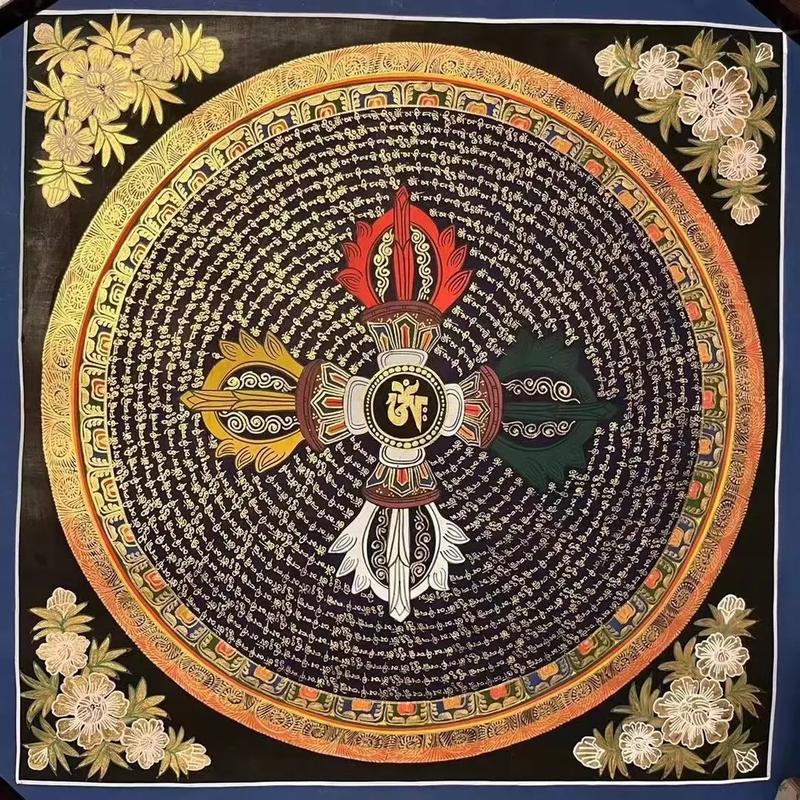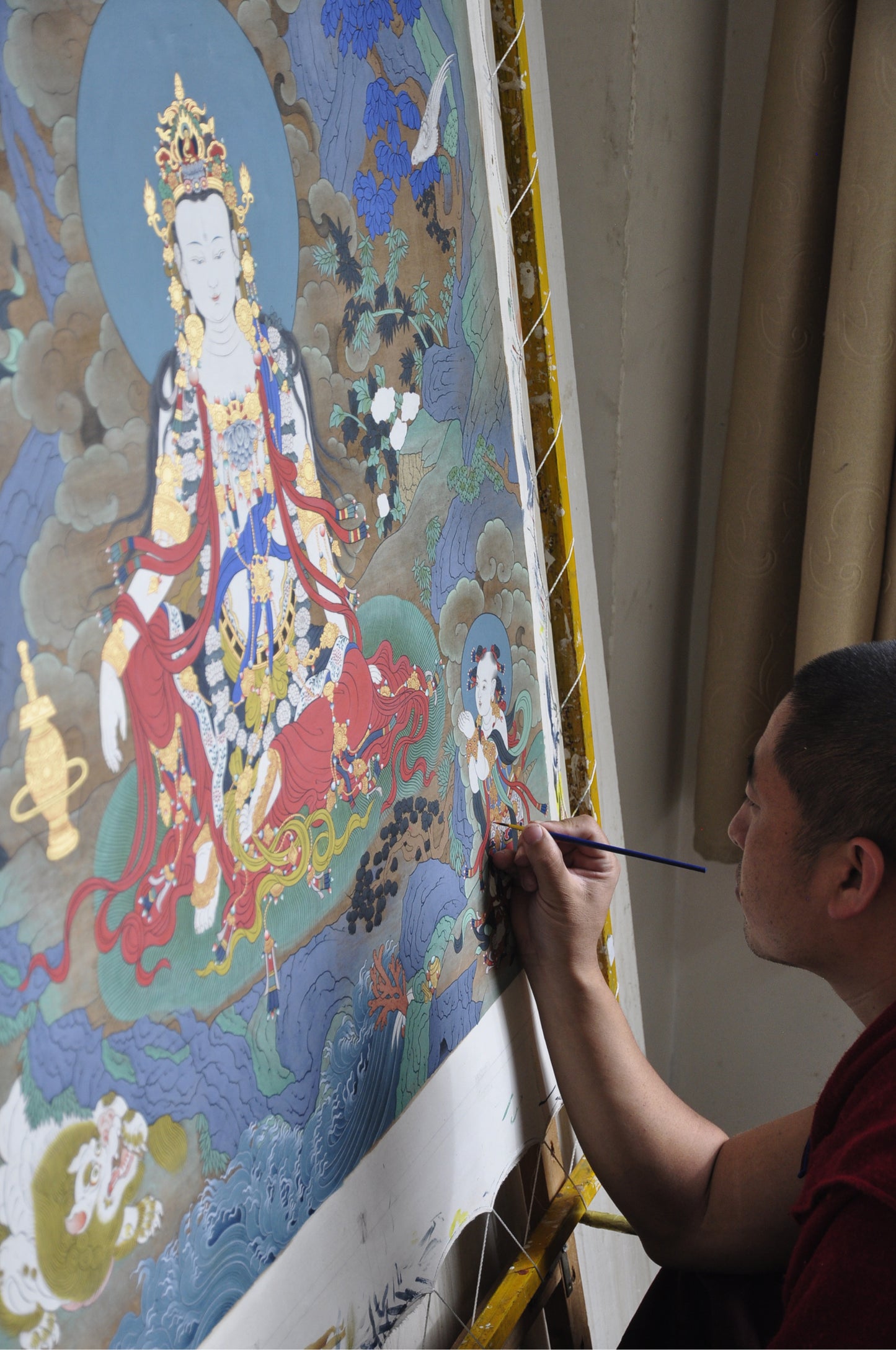东方道器
China's Intangible Cultural Heritage: Regong Art 中国非物质文化遗产:热贡艺术
China's Intangible Cultural Heritage: Regong Art 中国非物质文化遗产:热贡艺术
无法加载取货服务可用情况
China's Intangible Cultural Heritage: Regong Art | 中国非物质文化遗产:热贡艺术
I. Historical Origins & Core Region | 历史渊源与核心区域
EN:
Regong Art, known as the "Living Museum of Tibetan Buddhist Art," originated in the 13th century in the Longwu River Valley of Tongren City, Huangnan Tibetan Autonomous Prefecture, Qinghai Province. Rooted in Thangka painting, murals, appliqué thangka (Tolku), and sculpture, it flourished alongside Tibetan Buddhist monasteries. The name "Regong" derives from the Tibetan term meaning "Golden Valley." Its transmission centers on villages like Wutun, Nianfohe, and Gomari, each specializing in distinct crafts:
Wutun Village: Masters Thangka painting and clay sculpture.
Nianfohe Village: Focuses on large-scale murals and appliqué thangka.
Gashari Village: Excels in miniature Thangkas and polychrome carvings.
Listed as a National Intangible Cultural Heritage in 2006 and inscribed by UNESCO in 2009.
CN:
热贡艺术发端于13世纪青海黄南藏族自治州同仁市隆务河流域,以唐卡、壁画、堆绣、雕塑为核心,随藏传佛教寺院的兴盛而发展。其名称源自藏语“热贡”(金色谷地),主要传承于吾屯、年都乎、郭玛日等村落,形成“一村一艺”格局。2006年入选首批国家级非遗,2009年获联合国教科文组织人类非遗认证。
II. Artistic Features & Techniques | 艺术特色与技艺体系
1. Thangka Painting | 唐卡绘画
EN:
Technique: Blends the meticulous brushwork of the Mentang School with the freehand style of the Qinze School, creating the "New Mentang" style. Mineral pigments mixed with yak-bone glue ensure colors remain vibrant for millennia.
Themes: 80% depict Buddhist stories (e.g., The Twelve Deeds of Buddha), while 20% integrate Tibetan epics like King Gesar and Han Chinese landscape elements.
Masterpieces: The Twelve Deeds of Shakyamuni, Thousand-Armed Avalokiteshvara.
CN:
技法:融合曼唐派工笔与钦泽派写意,独创“新曼唐派”风格,矿物颜料经牛羊骨胶调和后色泽千年不褪。
题材:80%为佛本生故事,20%融入藏族史诗《格萨尔》与汉地山水元素。
代表作:《释迦牟尼十二宏化图》《千手千眼观音》。
2. Appliqué Thangka (Tolku) | 堆绣艺术
EN:
Craft: Silhouettes are cut from silk, layered with wool for 3D effects. A 2m² piece requires over 30,000 precise cuttings.
Masterpiece: Tsongkhapa Teaching the Dharma in the Longwu Monastery Grand Hall.
CN:
工艺:以绸缎裁剪人物轮廓,分层填充羊毛塑造立体感,一幅2平方米作品需耗费3万次剪贴。
代表作:《宗喀巴大师讲经图》现藏于隆务寺大经堂。
3. Clay Sculpture & Architectural Decoration | 泥塑与建筑装饰
EN:
Material: Red clay mixed with yak hair for durability. Statues reach up to 18m (e.g., Maitreya Buddha in Lower Wutun Monastery).
Painting: Uses "nine layers of coloring and gradient shading," with gold foil outlining to emphasize divinity.
CN:
材料:黄南红黏土混合牦牛毛增强韧性,塑像最高可达18米(如吾屯下寺弥勒佛)。
彩绘:采用“九染九晕”技法,金箔勾边凸显神圣性。
III. Industrialization & Community Participation | 产业化与社区参与
Cultural Value | 文化价值
EN:
Regong Art, guided by the principle of "skill serving Buddhism, art conveying truth," epitomizes Tibetan-Han cultural fusion. Its sustainable industrialization offers a "Chinese model" for global intangible heritage preservation.
CN:
热贡艺术以“技为佛用,艺以载道”的核心理念,成为藏汉文化交融的活态见证,其产业化模式为全球非遗保护提供“中国方案”。
A Golden Legacy
在佛光与颜料间,热贡工匠以指尖守护千年文明密码。
Through pigments and devotion, Regong artisans preserve a millennia-old cultural code with their fingertips.
Share
